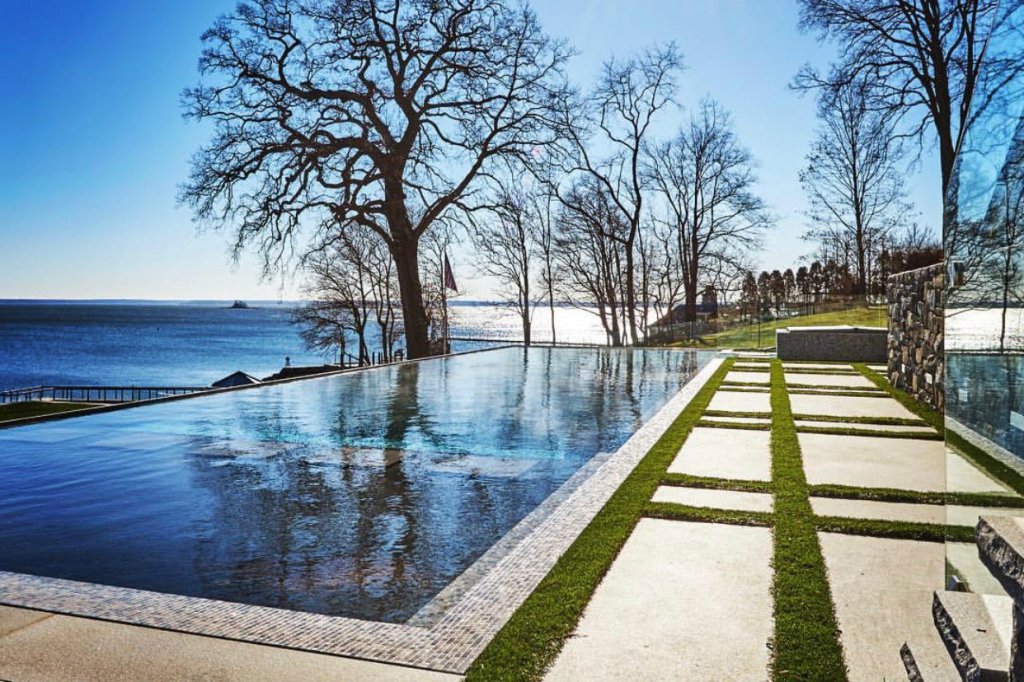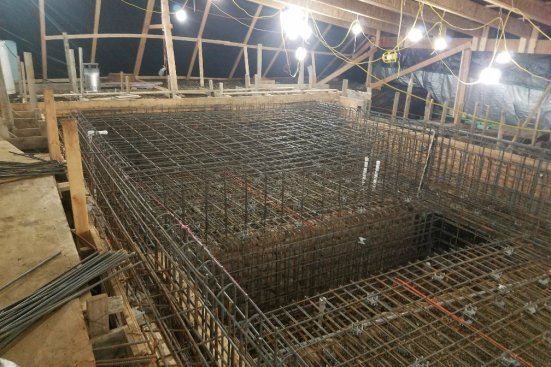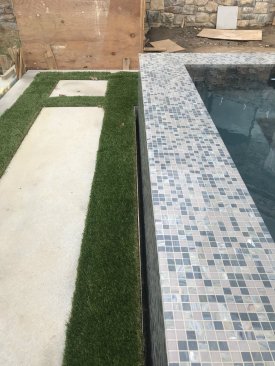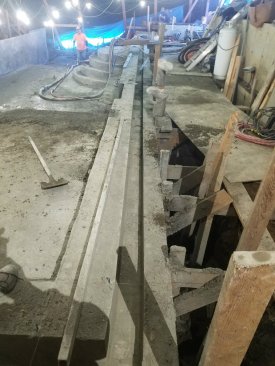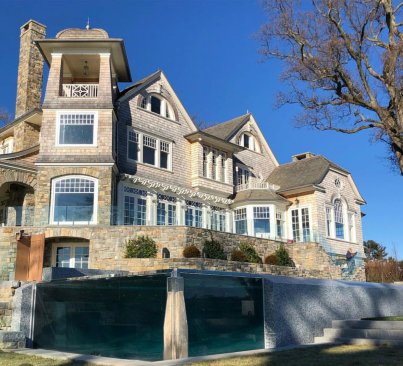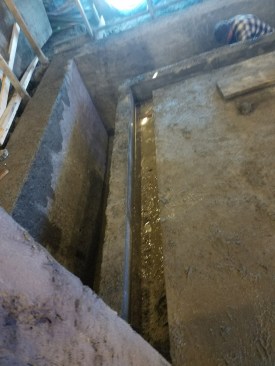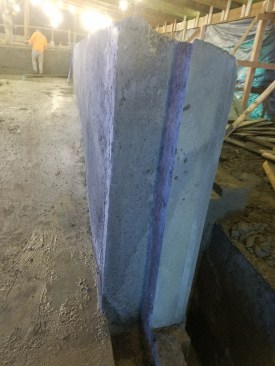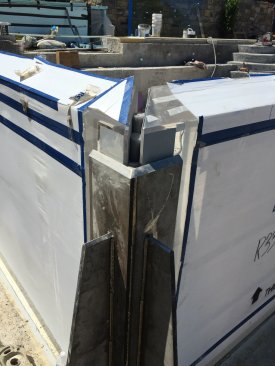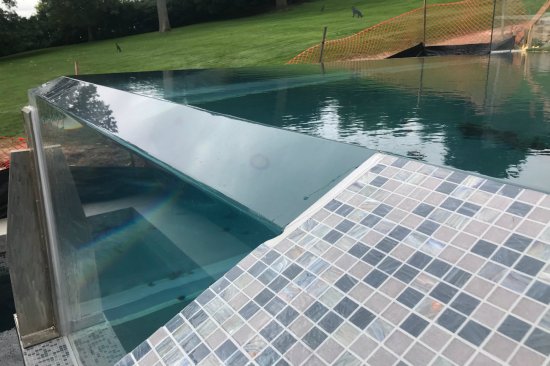While this home on Long Island Sound in Connecticut sported traditional New England styling, its owners had a penchant for cutting-edge detail.
Landscape architect Cory Jorgensen of Wesley Stout Associates in New Canaan, Conn. had already designed a long, 60-by-20-foot rectangular vanishing edge pool, whose sleek shape would allow lap swimming. He and the homeowners wanted to take it up a notch.
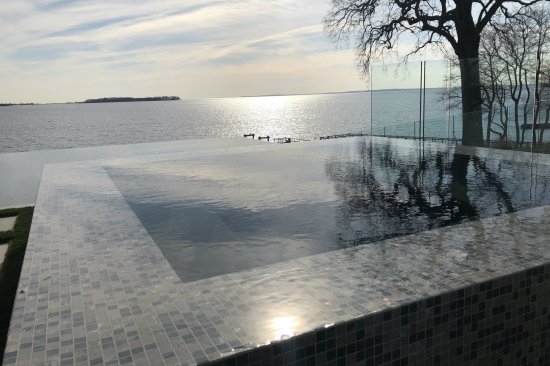
“The conversation started with, ‘We want a very cool pool. How can we make this one-of-a-kind and unique?’” says Bill Drakeley, managing member of Drakeley Pool Company in Bethlehem, Conn. “I said, ‘Well, you can do slot perimeter-overflow against the deck, you can do a vanishing-edge wall on the downhill side, you can put acrylic panels in there, you can do glass tile.’
“The owner says, ‘Yeah, let’s do all that.’ And I’m thinking, ‘Me and my big mouth.’”
The pool builder answered with a slot perimeter-overflow with grass running right up to it and, on the other side, a two-sided vanishing edge with double 7-foot-tall acrylic panels forming one of the corners. A shallow shelf, with about 6-inch-deep water and floating step stones, takes up a substantial portion of one end.
A raised spillover spa to the side is set off with a catch basin that features two floating step stones. Wedding-cake steps make a grand entrance. Concrete decking with lawn insets form line patterns that add a contemporary look.
A mix glass mosaic tile in grays, whites and dark blues on the outer walls and perimeter-overflow coping combined with a gray aggregate interior finish to accomplish the muted tones often associated with Northeast structures.
Structural Intricacy
Drakeley is known as a concrete specialist, teaching many Genesis classes on the subject. This project clearly called on his high-level skills.
The shallow lounge was built with a 4-foot-thick concrete floor to withstand frost conditions. It is reinforced with a 3-dimensional grid of No. 5 rebar set 12 inches on center, with each cage offset 6 inches.
“The steel and the structure are vital,” Drakeley says. “The pool spans soil areas that were at one point unsuitable and have been replaced with proper material.” Additionally, with such a high volume of concrete, substantial steelwork was needed to avoid shrinkage cracking.
The steel cage consists of four layers. With so much rebar, crews had to worry about completely encasing the steel and preventing shadowing — those voids that result when the nozzle can’t maneuver enough to get material around a bar. To avoid this problem, they pumped the 6,000-psi concrete in to form most of the monolith, using a hose without a nozzle. They also vibrated the material until it oozed out. Then, toward the top of the shelf, they put the nozzle in place and shot the material.
“As long as the concrete is still flowable and pumpable, we can shoot and then pour, and it’ll co-mingle,” Drakeley says. “That had to be done very carefully.”
Slot overflow detail
The deck-level slot overflow runs along two sides of the pool, with a vanishing edge taking up the other sides.
Drakeley and his team formed the perimeter-overflow gutters with concrete, pitched toward the vanishing-edge trough, where they empty. Considering the waterfront property’s tight dimensions, a remote surge tank was not an option.
Three-inch drop-outs remove the water and send it to the trough. The gutters are topped with a ¼-inch-thick 316 L stainless steel system that supports the grass and the 6-inch-thick soil in which it grows. The steel is buried and bolted along the gutter wall, then projects horizontally over the gutter. “So it forms a big L underground,” Drakeley says.
The gutter interior is coated in Basecrete waterproofing membrane system.
Elaborate cover
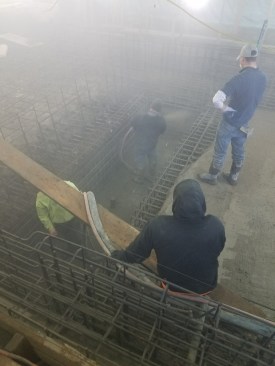
Crews working on the underwater cover box.
The pool features a Grando cover from Germany. Stored in a cover box underneath the pool floor, the cover floats to the water’s surface upon activation and branches in either direction, sliding along the track until it covers the entire pool.
The cover slides along a ledge that was formed in the coping on either side of the pool. It is set 4 inches lower than the coping, and finished in the same glass mosaic tile.
The 4½-foot-deep cover box, which runs across the entire pool width, increased the needed steel reinforcement and concrete thickness in the shell. A motor room sits outside the pool, in a vault under the deck. The PVC lid on the cover box is covered in glass mosaic as well, to help it blend with the rest of the floor.
Icy Effect
Two 7½-inch-thick acrylic panels meet to form the vanishing-edge corner in the deep end. The tops are beveled down and out toward the vanishing-edge catch basin.
Though Drakeley originally intended the panels to be fused together, the manufacturer was not able to make it work. So the builder and client decided to join them with a mullion made of ¾-inch stainless steel. Two fins project from the mullion for added support. “There’s a lot of weight that had to be supported,” Drakeley says.
A 1½-inch gap between the panels was caulked to allow movement.
To help the panels withstand the frigid winters and a 100-degree temperature differential throughout the year, the vanishing-edge system runs continuously, helping to maintain a relatively consistent temperature for the acrylic.
